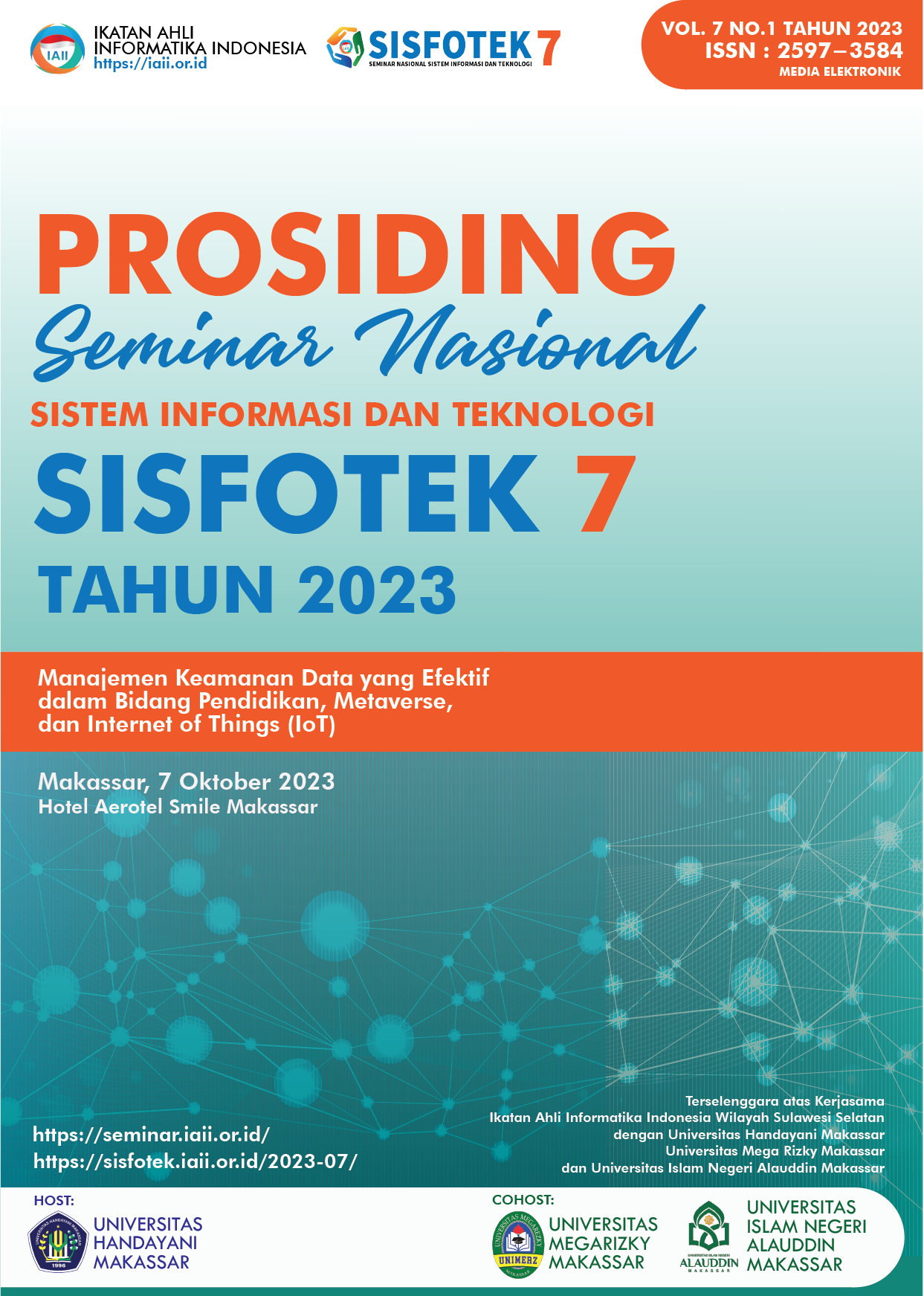Penentuan Status Penerima Bantuan Indonesia Pintar pada SMKN 9 Bulukumba Dengan Metode Naive Bayes
Keywords:
data mining, naive bayes, pip rapid minerAbstract
The Smart Indonesia Program (PIP) through the Smart Indonesia Card (KIP) provides educational cash assistance to school age children (6-21 years). KIP is part of the refinement of the Poor Student Assistance Program (BSM) since the end of 2014. SMKN 9 Bulukumba is located on Jalan Pendidikan No. 57, Tritiro Village, Bontotiro District, Bulukumba Regency. This vocational school is one of the vocational schools in the Bontotiro area that received funds from the Smart Indonesia Program (PIP). The PIP target at SMKN 9 Bulukumba is still not well targeted, due to the lack of criteria for the number of dependents. Therefore, the author added the criteria for the number of dependents in the research. This research was created based on previously existing data, namely 143 training data. Using the Naive Bayes method and with 6 attributes, namely Type of Residence, Number of Dependents, Parent's Occupation, Parent's Income, and KPS Recipient. using RapidMiner's supporting tools in testing the accuracy of the Naive Bayes method. The results of accuracy testing obtained using the RapidMiner application and manual calculations obtained an accuracy of 74.00% and the resulting classification was included in the Good Classification group because the AUC value obtained from testing based on the ROC curve using the Naive Bayes method was 0.860. So, it can be concluded. that the Naive Bayes Algorithm can be applied to determine the feasibility of accepting the Smart Indonesia program for students of SMKN 9 Bulukumba
References
O. Rini and S. O. Kunang, “Implementasi Data Mining Menggunakan Metode Naive Bayes Untuk Penentuan Penerima Bantuan Program Indonesia Pintar ( Pip ) ( Studi Kasus : Sd Negeri 9 Air Kumbang ),” Bina Darma Conf. …, pp. 714–722, 2021.
Bustami, “Penerapan Algoritma Naive Bayes,” J. Inform., vol. 8, no. 1, pp. 884–898, 2014.
S. Kasus, S. M. P. Negeri, and M. A. M. Baihaqi, “Klasifikasi Penerima Beasiswa Menggunakan Metode Naïve Bayes,” vol. 1, no. 2, pp. 51–56, 2023.
A. Pebdika, R. Herdiana, and D. Solihudin, “Klasifikasi Menggunakan Metode Naive Bayes Untuk Menentukan Calon Penerima Pip,” JATI (Jurnal Mhs. Tek. Inform., vol. 7, no. 1, pp. 452–458, 2023, doi: 10.36040/jati.v7i1.6303.
K. Prajatama, F. E. Nugroho, A. F. Sentosa, and S. Fauziah, “Deteksi Kualitas Buah Apel Malang Manalagi Menggunakan Algoritma Naive Bayes,” e-Jurnal JUSITI (Jurnal Sist. Inf. dan Teknol. Informasi), vol. 8–1, no. 1, pp. 32–38, 2019, doi: 10.36774/jusiti.v8i1.598
Downloads
Published
How to Cite
Issue
Section
License
Copyright (c) 2023 Seminar Nasional Sistem Informasi dan Teknologi (SISFOTEK)

This work is licensed under a Creative Commons Attribution 4.0 International License.
http://creativecommons.org/licenses/by/4.0







